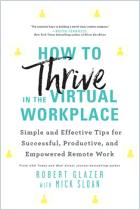Rejoignez getAbstract pour lire le résumé !

Rejoignez getAbstract pour lire le résumé !
Aaron Orendorff
10 Rules of Professional Etiquette for the Digital Workplace
Lifehacker, 2016
Aperçu
If you work remotely, use exceptional digital etiquette to build respect and a strong reputation.
Recommendation
To emoji, or not to emoji, that is the question. Fostering appropriate digital etiquette is a critical workplace skill in a world where remote employment is increasingly becoming a norm. In the digital workplace, email and textual communication lack the subtleties and nuances that face-to-face communications boast, and remote workers must compensate to keep long-distance professional relationships functioning. Communication specialist Aaron Orendorff offers a go-to guide on professional etiquette for all employees working remotely.
Summary
About the Author
Aaron Orendorff, a professor of communication and philosophy, champions business growth and scalability through exceptional content.
























Comment on this summary